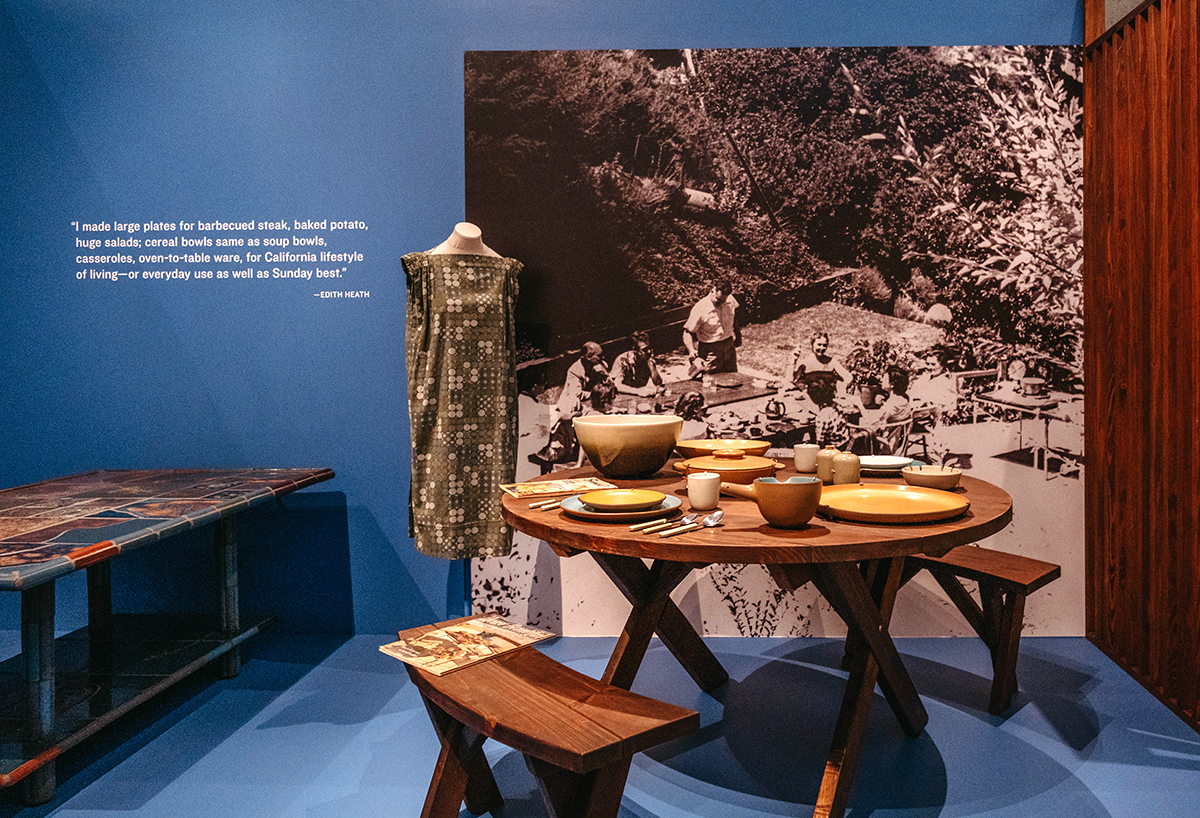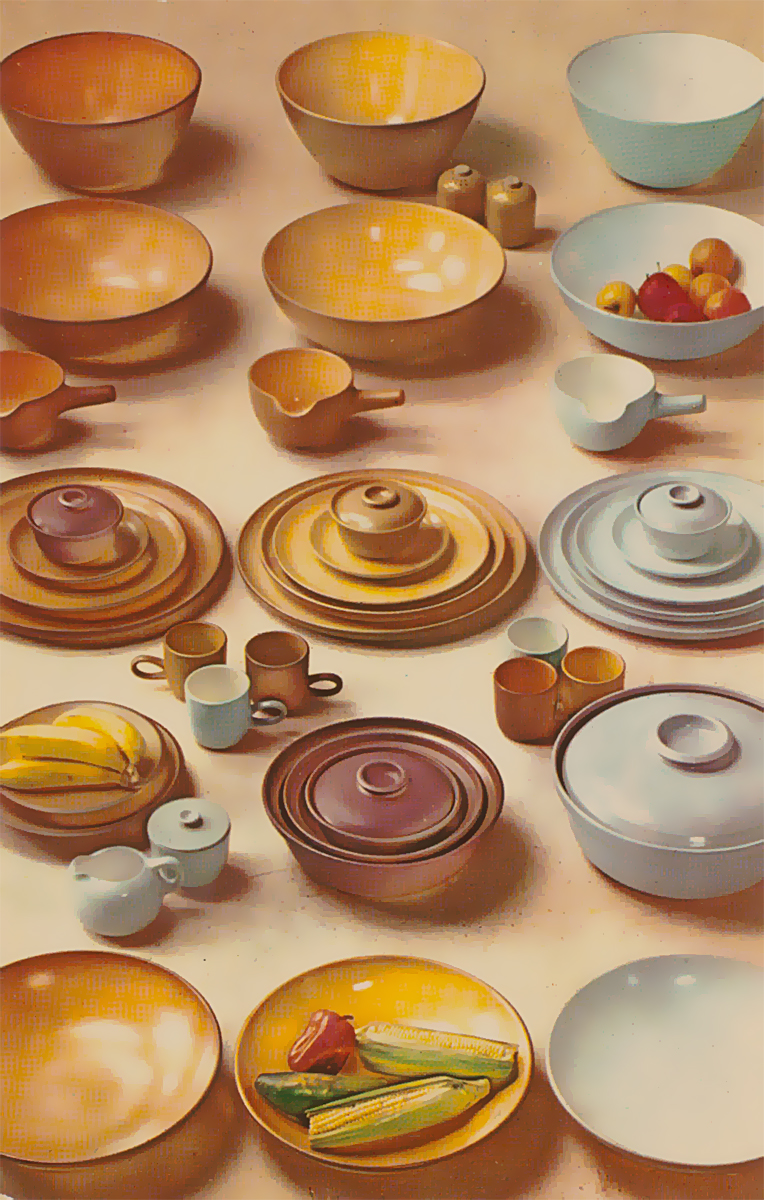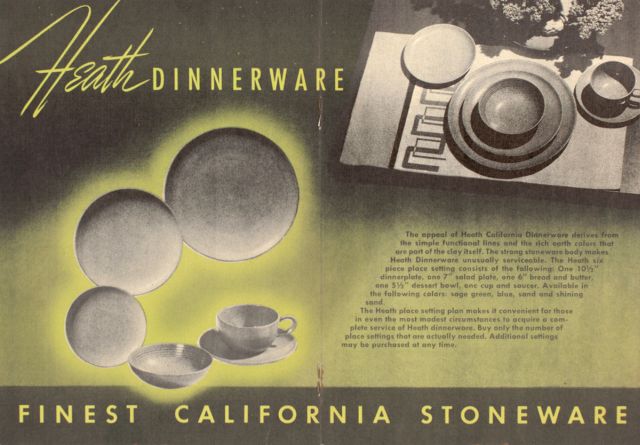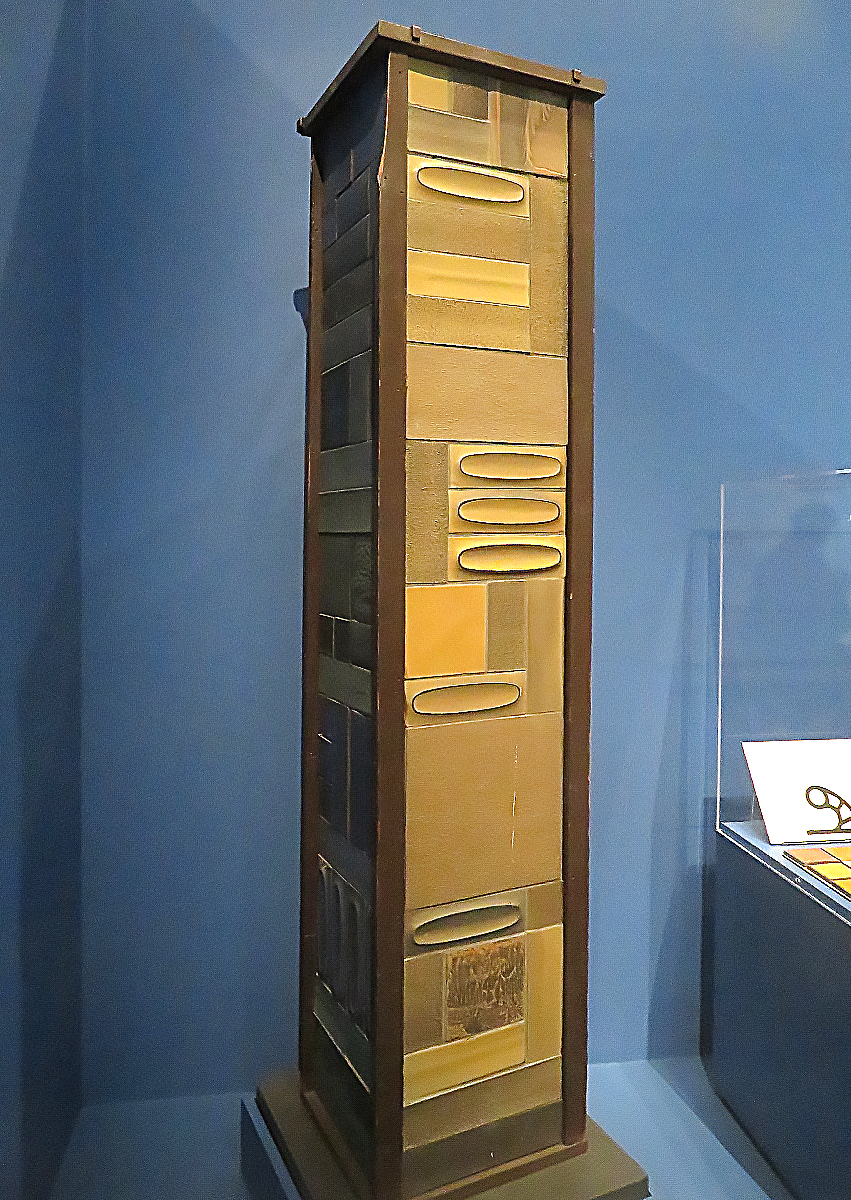
Edith Heath Show Profiles a Rebel in Clay
 |
The parallels between the careers of Edith Heath, the subject of a compact but compelling exhibit at the Oakland Museum of California, and Joe Eichler are striking. Both began their professional creative endeavors in the late 1940s.
In 1945 and 1946, Heath moved from individually producing ceramics using a wheel to hiring a staff and moving towards mass production, albeit on a relatively small scale.
In 1947 Eichler, a former officer of a butter-and-egg firm, then the owner of a deli, began building tract homes in Sunnyvale.
Each became pioneers in producing modernist work for the mass market, where before such work was out of reach or less readily available.
Before Eichler, and a few other modernist tract builders of the late 1940s, modern homes had been available only as custom homes, too costly for many buyers and too complicated, as owning one involved hiring an architect.
 |
Before Heath, modernist potters like Marguerite Wildenhain were producing fine pots and other ceramic ware, but as individuals working in their studios. By 1946, the new Heath Ceramics had a deal for national distribution, and shortly afterwards had its own factory, originally in rented space, in Sausalito.
But what is most remarkable about Heath and Eichler is the commitment each showed towards keeping quality high and to sticking to such modernist principles as simplicity, aesthetics born from function, and relative affordability.
Heath (1911-2005) reacted against the frilly, flower-bedecked white cups, saucers, and tureens that she grew up using, made of porcelain – and shown in this exhibit, 'Edith Heath: A Life in Clay,' thanks to the Brian and Edith Heath Foundation.
“I’m going to rebel against this white clay,” Edith said, as a panel reveals. “I’m just not going to use it.”
 |
She vowed never to use the standard white and other ceramic store clays in her work, instead scouring the countryside for native clays. In this way she was very much a landscape artist. The show includes a circa 1942 painting by Edith, ‘Untitled (Edith Dreaming of the Landscape)' that shows the artist at her desk envisioning a mild yet mountainous California.
One of the show’s virtues is to bring clay home to viewers as a medium that requires scientific experimentation and a poetic sense.
We see many examples of Heath’s experimentation with different clays using different additives, different glazes, firing temperatures, and the like. We see the development of her characteristic speckled look, which speaks to the clays of her beloved, adopted state.
On display is a chunk of Sierra granite, from which clay arises, and such additives as petalite and nepheline syenite. We learn about the science of 'eutectics,' which allowed Heath to produce through low firing ware that was water resistant, hard and durable.
 |
Edith's husband, Brian, who devised much of the machinery that produced Heath ware, also developed one of its most profitable products – an ashtray designed to hold burning cigarettes in place even as they smoldered out, even if one forgot about them. “Notches snuff out forgotten cigarettes,” their ad promised.
Heath ashtrays won commendations from fire safety advocates.
Edith was virtually drummed out of the community of crafts potters as Heath Ceramics moved into a production mold, but she didn’t care.
One vitrine shows handmade and commercial Heath products side by side and states that “Heath believed that one technique wasn’t better than another.”
Still, her handmade, sometime one-off pieces seen throughout the show are marvelous. And the exhibit makes clear Heath continued to experiment throughout her career, sometimes using production pieces to create artworks decorated with free-flowing glazes.
 |
On display is a ceramic-topped table she had created for an Oakland doctor, recycling glaze that otherwise would have gone to waste, and cracked tiles that otherwise would have been trashed.
Edith Heath was a bit of an architect too. Oftentimes clients of architects claimed they 'designed' their building with the architects merely handling structural issues or details.
But as shown here, in the plans for the (still-existing) mid-century modern Heath factory in Sausalito, the esteemed architects Marquis & Stoller were happy to acknowledge Edith’s role in the design.
Indeed in later years, and following the Oakland firestorm, Edith Heath proposed constructing entire buildings out of Heath ware. We see an example of the extruded ceramics that would have gone into such buildings.
You can read about Heath in several books. You can visit the Heath factory and Heath showrooms. But this exhibit goes a bit farther, setting Edith’s work in context.
- ‹ previous
- 161 of 677
- next ›



